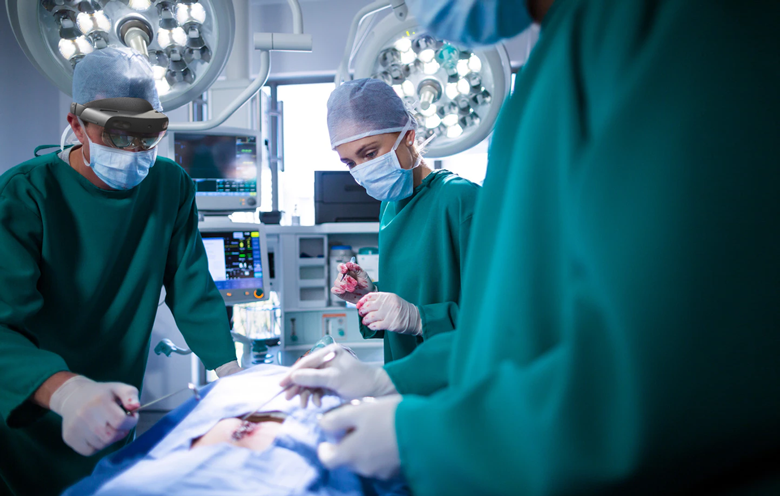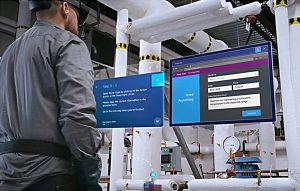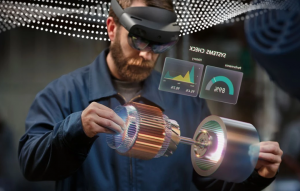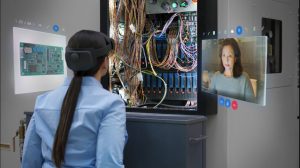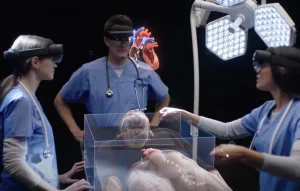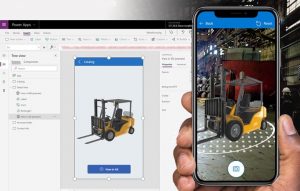Mixed reality (MR) is revolutionizing the healthcare industry by accelerating the chronic illness diagnoses process, making the care time more effective, enabling a personalized and improved patient care experience.
In the surgery part of the healthcare domain, there’s a need for a lot of planning, preparation and precision. A doctor cannot afford to lose focus while performing surgery on a patient. Mixed reality in surgeries aims to empower doctors and provide them with the necessary surgical tools and information without any waste of time. Therefore, mixed reality has transformed the surgery procedure by enabling surgeons to remotely collaborate with other surgeons on patients who could be thousands of miles away.
With mixed reality applications in healthcare, surgeons can perform various operations virtually and nurses can polish their skillset. All in all, mixed reality makes it feasible to leverage technologies to make seamless pre-procedural planning and operative visual assistance to doctors for critical surgeries and minimize risks.
The global mixed reality healthcare market size was valued at USD 54.2 million in 2019 and is expected to grow at a compound annual growth rate (CAGR) of 48.7% from 2020 to 2027.
– Grand View Research
Checkout various use cases of mixed reality in the healthcare sector
Provide healthcare professionals with learning opportunities
MR aids medical students by preparing them to face various challenging situations that might occur while performing surgery in real clinical settings. Using holograms of AI-enabled mixed reality applications, training medical professionals in the diagnosis and patient treatment becomes easier compared to traditional simulation devices. Also, prior to surgery, nurses can be trained virtually to deal with challenges that they may encounter during real-life surgical procedures.
Perform reconstructive surgeries with less time and error
Mixed reality apps also help in reconstructive surgeries by supporting surgeons in locating and recombining major blood vessels. With holographic overlays of MR, surgeons can see the tissues, tumors, bones as well as recognize the course of blood vessels which helps them in performing surgery seamlessly with a better outcome.
Enable surgery planning and execution effectively
MR technology in the medical field has proved to be very useful for surgery planning and assistance during surgery. A plan of the surgery can be strategized on an X-ray of the patient to be used while operating. Also, leveraging an MR app in surgery can help in reflecting the same plan on the patient when an operation is performed to make the work more accurate and easier.
Get medical manikins with MR
Medical mannequins can be brought to life by using mixed reality, which acts as an invaluable asset while training medical students. Traditionally, during medical training, the manikins used were dummies and they do not deliver the experience of learning on a real person. However, with AI-enabled image recognition, mixed reality apps help to convert a dummy manikin into a life-like person. Moreover, this technology gives a risk-free environment for learners to get hands-on experience. Similarly, trainers can also observe the way students interact with the patients during surgery and improve their technical skills.
MR and AI for safer surgeries- The win-win
These are just some of the benefits of mixed reality in surgery – quality treatment, medical training and more. You can offer faster and better care at reduced costs by deploying mixed reality apps for your hospital or clinical setup for before, during, and after surgical processes. If you are looking to get more information on how AI-based mixed reality apps are applicable for safer surgeries, get in touch with our experts.


